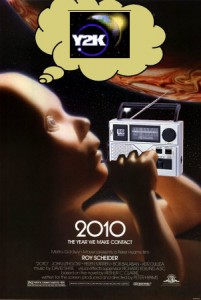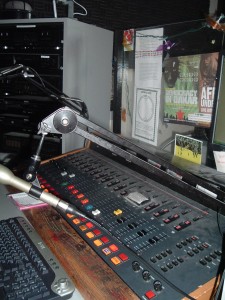Although today’s New York Times claims that “Internet Radio Stations are the New Wave,” a look back at the past decade makes it very clear that Internet Radio’s growing influence is hardly revolutionary news. In fact, it’s hard to overstate the importance of the Internet and Internet Radio during the last 10 years.
The radio landscape has changed tremendously and much of that had to do with the adoption of both the Internet and streaming media by the mainstream.
According to the decade-spanning report, The Infinite Dial 2009: Radio’s Digital Platforms, by Arbitron and Edison Research, in 1999 only 50% of Americans had online access compared with 85% in 2009.
Beginning in 2006, the majority of Americans with at-home Internet access had a broadband connection; making it easier to download and stream audio content. By 2009, approximately 42 million Americans listened to online radio weekly (twice the number who did in 2005).
Although this massive growth of Internet radio happened in this decade, the first attempts at streaming radio started in the early 1990s. The very first terrestrial radio stations to begin broadcasting online were college radio stations WXYC (University of North Carolina at Chapel Hill) and WREK (Georgia Tech University) in 1994.
Always ahead of the curve, many college radio stations embraced webcasting, online playlists, blogging, podcasts and broadcast archives well before these technologies were adopted by their commercial counterparts. Tech-savvy students were often the instigators and developers of the technology (as was the case at WREK). Commercial station KPIG claims to be the first commercial radio station to broadcast online with its first webcasts in 1995.
Early online-only radio (and broadcast) ventures emerging in the mid to late 1990s included Broadcast.com (later acquired by Yahoo), Spinner (which started in 1996 as TheDJ.com and was later acquired by AOL), NetRadio, Imagine Radio (purchased by MTV), and online radio network Live365.
According to a study by Arbitron and Edison Media Research, in 1999 13% of Americans reported listening to Internet radio. This was a huge jump in listeners over the course of a 6-month period and they speculated at the time that:
“…adoption of audio online has occurred far faster than other historical new audio technologies such as AM or FM radio, CDs, cassettes, etc.”
By 2000, Arbitron and Edison reported that 20% of Americans were listening to online radio and by 2001 they found that among those listening to online radio, more than 50% said that they mostly listened to stations from their local area. In 2003 the percentage of Americans who had ever listened to online radio grew to 40%.
Online radio encompasses not only terrestrial radio stations with webstreams, but also the variety of online-only offerings including the now-defunct community-based interactive streaming service Echo that launched in 2000, the DJ-less recommendation-engine Pandora (our #5 trend), and a number of companies that hosted a range of genre-specific stations such as Radio@AOL and Live365. By decade’s end, Apple was also hosting radio streams and providing a directory of stations through iTunes.
Along the way, there were bumps in the road, especially when it came to working out all of the details about copyright and royalty payments for online broadcasts. Protests about royalty payment rate hikes led to 2007’s Internet Radio Day of Silence (our trend #7 ) and there’s still ongoing debate about payment schedules.
Before taking their own broadcasts online, commercial radio stations felt the sting of competition from the wide range of radio offerings available online. By the end of the decade many learned that the best response was to create their own online streams and increase the variety of programming that they aired.
Yet, the often trend-setting non-commercial radio stations were miles ahead of their commercial counterparts, embracing the range of opportunities available to them by taking their broadcasts online. Since my personal focus is on college and indie radio stations, here are a few of the ways that these stations have adapted and evolved due to online radio:
1. Some college radio stations chose to go web-only, either because administrations took away their terrestrial signal (see trend #11) or because they no longer saw the relevance of using older methods like campus-only carrier current (and even FM!). For stations with college-age listeners, computers were often more common in dorm rooms than radios; so terrestrial broadcasts seemed a bit antiquated (we’ll see if this changes as FM radios are incorporated into iPods and iPhones).
2. Many college and public radio stations adopted multiple web streams for different types of content. Some college stations aired different content over their terrestrial signals than they did on their online streams, whereas others crafted online-only stations specifically for training purposes.
3. Students who were eager to start up college radio stations on campus were now able to easily do so by launching online-only radio stations, without having to go through the laborious process of applying for an FCC license for a terrestrial signal (which they would have little chance of getting anyway).
4. Pirate radio stations had more options to share their community-oriented programming. Stations like East Village Radio opted to shed its unlicensed past when it went online-only and has attracted a wide following. Similarly, when the FCC came knocking at Pirate Cat Radio in San Francisco, the station decided to abandon the FM airwaves for the safety of an online-only signal.
5. Audiences for stations with weak terrestrial signals have the opportunity to grow exponentially through streaming which allows listeners to tune in from all over the globe.
In another 10 years we’ll probably be amused by the distinctions that we now make between terrestrial radio, satellite radio, Internet Radio, HD Radio, podcasts, etc. As technologies converge, these categories may matter less and less. It’s already the case that one can purchase Internet radio tuners that can dial up any station that’s online and broadcast it to your home much like a classic radio would. And with iPods and mobile phones now incorporating FM tuners, some have speculated that they may be the new transistor radios.
In any event, Internet Radio is here to stay, bringing with it endless variety, thousands of stations (from commercial to college), and every subgenre of music you could dream up. It’s hard to imagine the world without it.




